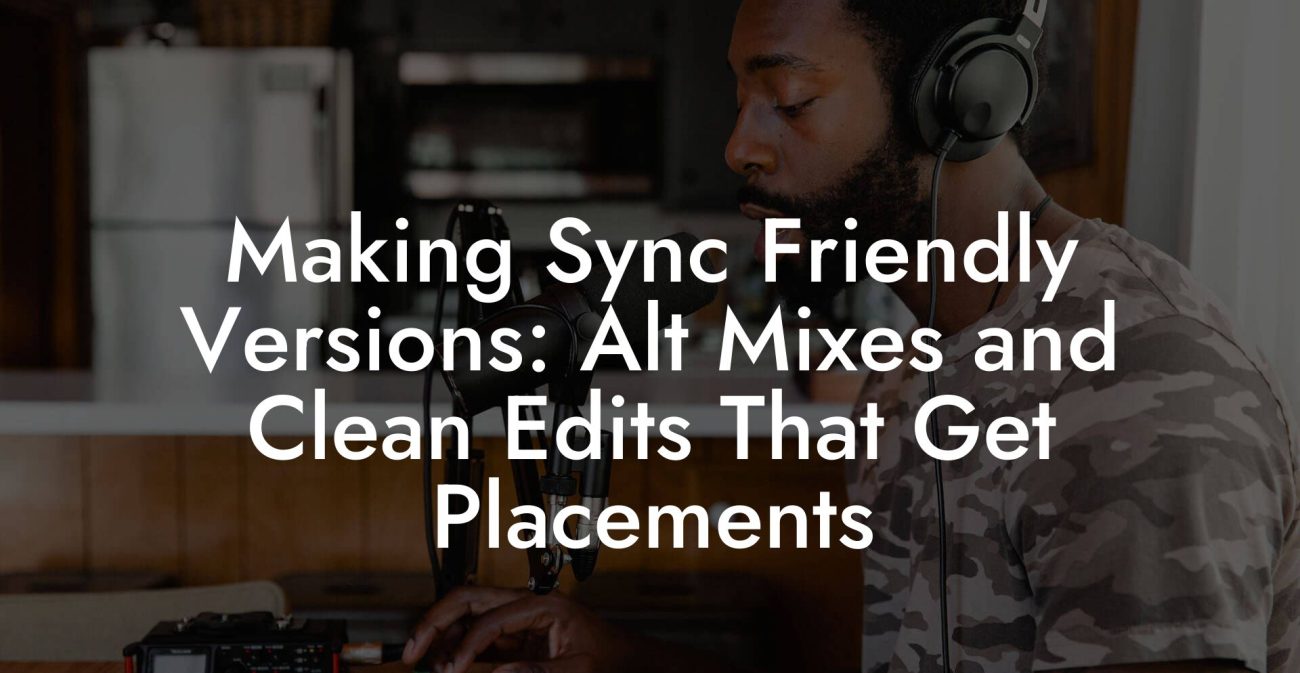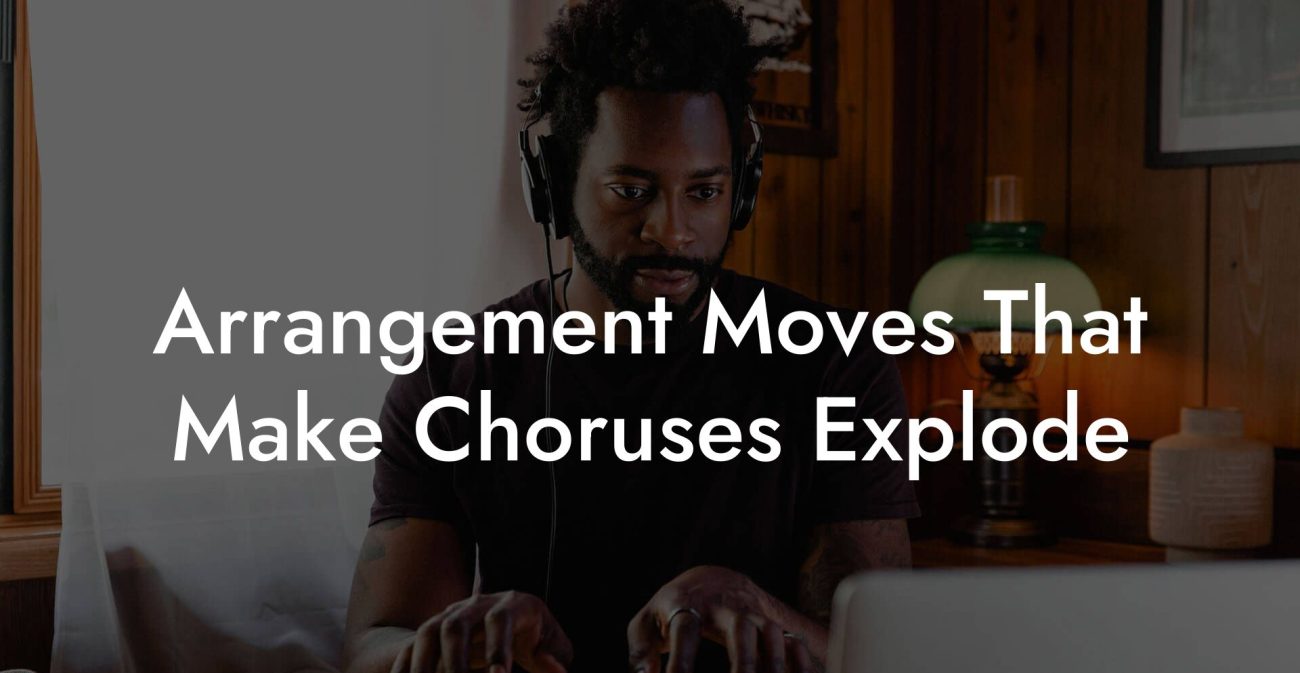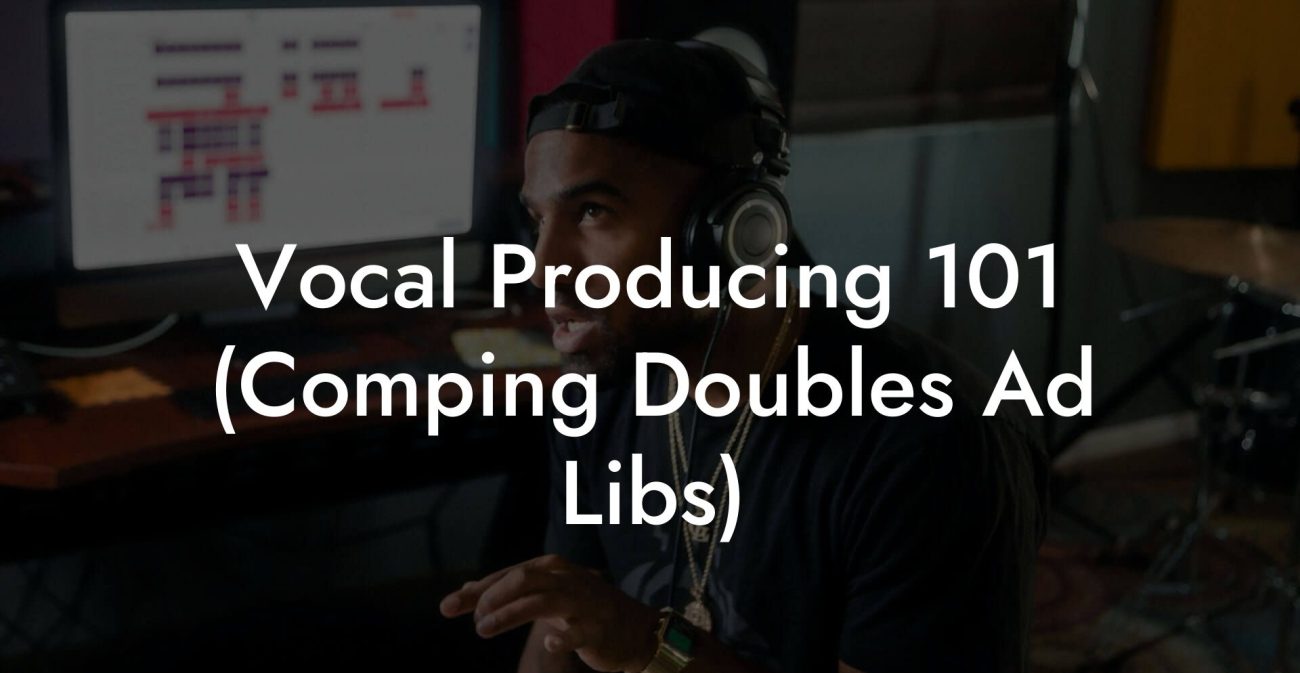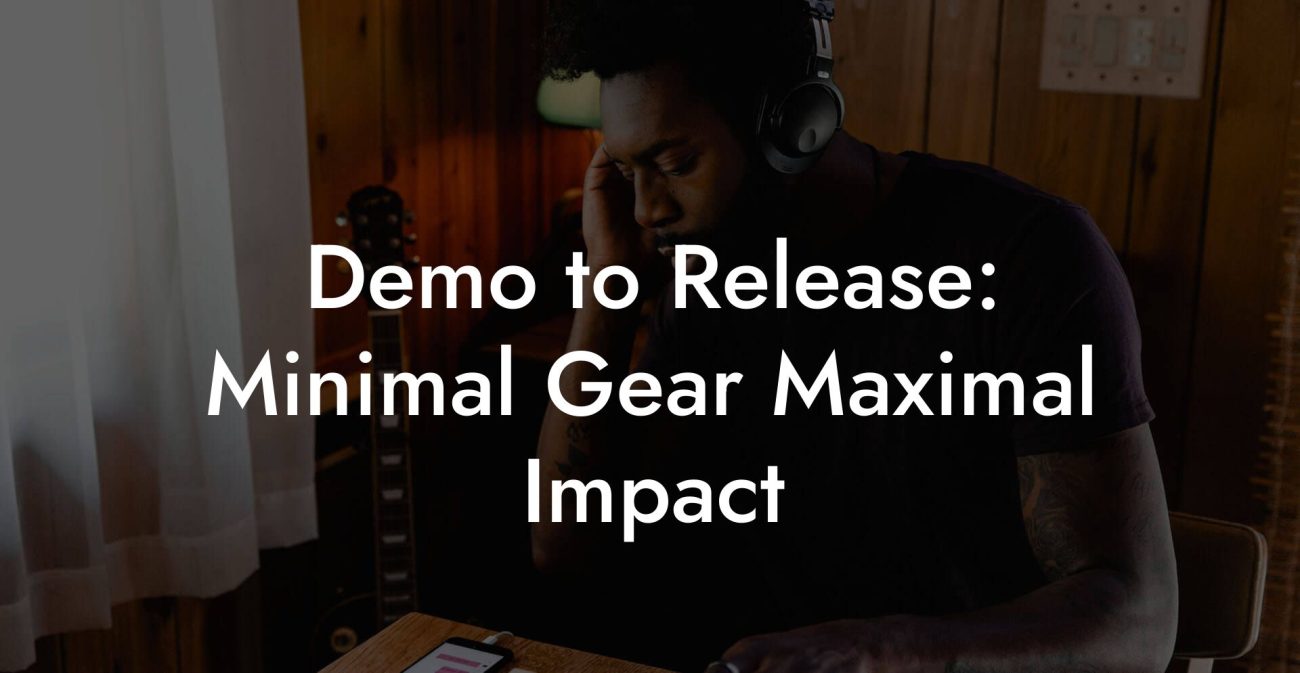Songwriting Advice
Writing with Loops & Samples: Legal Basics for Sample Packs and Beat Makers
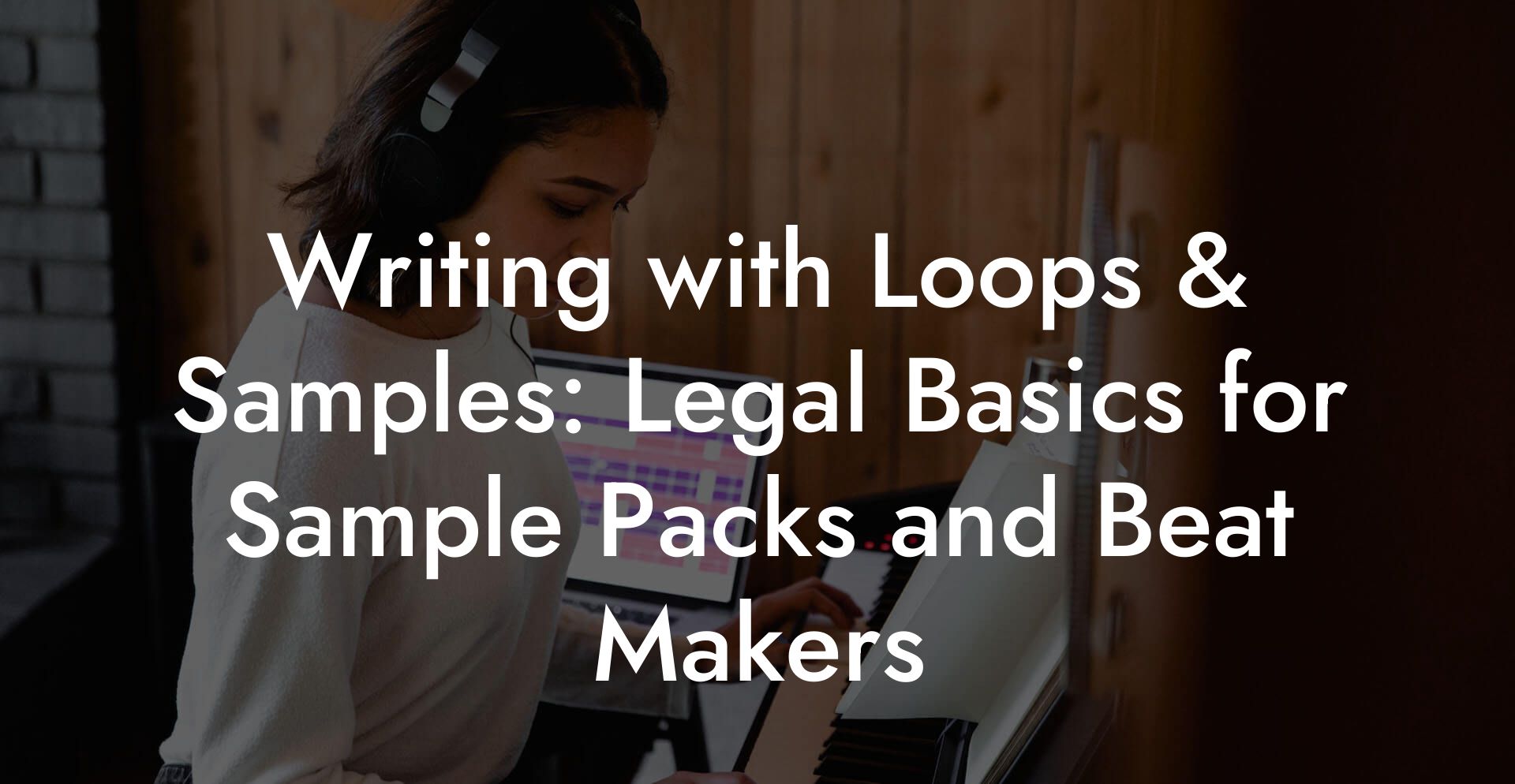
You love a loop that slaps. You do not love a cease and desist that slaps your bank account. Whether you are building a beat, packaging a sample pack to sell, or snagging a vocal snippet from vinyl like a haunted thrift store find, the law touches every clap, snare, and vocal chop. This guide gives you the legal map without boring you to sleep. We will cover the rights you need, how to clear samples, practical EULA tips for selling packs, real life scenarios, and the exact steps to take when someone claims your song.
Quick Interruption: Ever wondered how huge artists end up fighting for their own songs? The answer is in the fine print. Learn the lines that protect you. Own your masters. Keep royalties. Keep playing shows without moving back in with Mom. Find out more →
Quick Links to Useful Sections
- First Things First. What Is a Loop and What Is a Sample?
- Why Legal Stuff Actually Matters
- The Two Separate Rights You Always Need to Think About
- Composition rights
- Master recording rights
- Common Rights Terms Explained
- What Does Royalty Free Really Mean
- Where People Go Wrong
- Sample Clearance 101
- How Much Clearance Costs
- Interpolation Versus Sampling
- Creative Commons and Public Domain Explained
- Creating and Selling Sample Packs Legally
- Make sure every element in the pack is either original or cleared
- Write a clear EULA
- Decide exclusive versus non exclusive
- Metadata and chain of title
- Uploading to Marketplaces and Distribution Sites
- What to Do If Someone Uses Your Song With a Sample Without Permission
- If you own the sample and someone used it without permission
- If you used a sample and got a claim
- Split Sheets and Publishing Splits
- Common Myths Debunked
- How to Buy Samples Without Risk
- Sample Clearance Services and Lawyers
- Practical Checklist Before Release
- Real Life Scenarios You Will Recognize
- The Splice Loop That Made the Beat
- The Vintage Vinyl Vocal You Chopped
- The Beat Lease That Goes Viral
- Words You Should Use in Contracts and Licensing Requests
- Final Practical Tips You Can Use Today
- FAQ
This is written for millennial and Gen Z creators who want savage creativity and minimal legal panic. We will explain every acronym and term so you can sound smart and avoid getting sued. You will leave with checklists you can use today, contract language you can copy, and examples you will actually remember.
First Things First. What Is a Loop and What Is a Sample?
A loop is a short piece of audio that repeats. It can be drums, bass, guitar, synth, vocals, or any combo that repeats in time. A sample is any piece of recorded sound taken from some source and reused in a new recording. Every loop is a sample sometimes. Not every sample is a loop all the time.
Real life example
- You bury a four bar drum loop from a pack under your beat. That loops forever. That is a loop.
- You take a two second vocal yelp from an old 1970s record and stretch it into a hooky texture. That is a sample.
Why Legal Stuff Actually Matters
Because platforms track ownership. Because labels like money. Because you can lose streaming revenue and face takedowns. Because a sample you used for fun can become the reason your first paycheck vanishes in legal fees. Also because lawyers have better lighting than you do when they take photos of contracts.
Write Lyrics Like a Professional Songwriter
The ultimate songwriting tool that takes your creative vision to the next level! With just a few clicks, you can unleash your inner songwriter and craft a hit that's uniquely yours. Your song. You own it.
Short version
- Use uncleared samples and you risk DMCA takedowns, claims to your streaming revenue, and possible lawsuits.
- Sell loops that include uncleared third party material and you can be liable for copyright infringement in commerce.
- Proper licenses protect you, your collaborators, and your future career moves.
The Two Separate Rights You Always Need to Think About
Copyright in music splits into two separate cakes. You need to know both flavors.
Composition rights
These are the rights in the underlying song. Composition rights cover melody, lyrics, chord progression. The owners are the songwriters and their publishers. If you sample a vocal, you might need permission from whoever owns the composition. In casual talk we call this publishing rights.
Master recording rights
These are the rights in the recorded performance. If you sample an audio clip from a recording, you need permission from whoever owns that recording. That is usually a label or the recording artist if they self release. Master rights control the actual sound you lifted from the original track.
If you sample a recorded vocal, you often need both composition permission and master permission. If you replay the part with your guitar or a session singer, you may avoid master clearance but you still likely need composition clearance if the original melody or lyrics are used. Replaying a part is called interpolation. Interpolation still touches composition rights.
Common Rights Terms Explained
- EULA is short for end user license agreement. That is the contract you read or skip when you buy a pack. It tells you what you can and cannot do with the content.
- PRO means performance rights organization. These are groups that collect public performance royalties for songwriters and publishers. Examples are ASCAP, BMI, and SESAC in the United States. If your song plays on radio or a live show, a PRO collects money for the composer and publisher.
- ISRC stands for International Standard Recording Code. That is the unique ID for a master recording, similar to a serial number. It helps tracking and royalties for recordings.
- Sync means synchronization license. That is permission to use music in timed relation to visual content such as a film, YouTube video, or commercial. Sync rights live with the composition owner and sometimes the master owner if the actual recording is used.
- Mechanical rights are the rights to reproduce and distribute the composition in physical or digital format. Streaming mechanicals are handled by collection agencies in many countries.
What Does Royalty Free Really Mean
Royalty free means you do not owe per play royalties to the seller of the sample. Royalty free does not mean free of restrictions. Most royalty free packs require that you do not repackage and resell the loops as loops or as part of a competing sample pack. It also does not mean you do not need to credit. Some packs request credit. Always read the EULA.
Seller promise scenarios
- Pack seller A says royalty free, use in commercial tracks. That usually lets you sell beats and collect streaming money without paying the pack creator, provided you do not resell the raw loop files as a new pack.
- Pack seller B says royalty free but requires attribution and prohibits use in standalone sound libraries. That means you must credit the creator on your release and you cannot include the raw loops in a pack you sell.
Where People Go Wrong
- They buy a pack from a sketchy site that claims royalty free and find the same loops in a major label track. Oops.
- They sell beats that consist mostly of one unprocessed loop from a pack, and that looks like reselling the loop.
- They sample a famous song and think changing pitch saves them. It does not. Clearing is safer than gambling on digital alteration.
Sample Clearance 101
Clearance is the process of getting permission to use a sample. Here is the step by step you should follow if you decide the sample is worth the cost and the risk.
- Identify the original recording and composition owners. Check liner notes, databases, and the ISRC if possible. If the song is recent, the label usually owns master rights and a publisher owns composition rights.
- Contact the rightsholders. For masters that means contacting the label or whoever distributes the record. For composition that means the publisher. Many songs have multiple publishers so expect paperwork.
- Request permission with specifics. Say how you will use the sample, for how long, in which territories, and whether the use is exclusive or not.
- Negotiate fees. Options are one time flat fee, a revenue share percentage, and sometimes a combination of both. Publishers or labels may ask for songwriting credits which mean publishing splits.
- Get a written license. Never rely on a handshake. The license should list who grants rights, what rights are granted, territory, term, payment, and indemnities. Save copies on cloud and email.
- Register metadata correctly when releasing. Include songwriter credits if required. Upload ISRC for the master and register the composition with the correct splits with your PRO.
How Much Clearance Costs
There is no price tag that fits all. It ranges from free to millions. Factors that influence cost include how famous the original song is, duration and prominence of the sample, territories, and whether the owner wants publishing points. For a small indie clearance you might pay a few hundred to a few thousand dollars. For a mainstream hit sample expect to negotiate serious money and potentially a split that gives away half or more of your publishing.
Real life example
You use a recognizable guitar riff from a 1990s pop hit. The publisher asks for 50 percent of publishing and 50 percent of the master revenue for all sales. That is common when the sampled part is central to the new song. For a two second cymbal hit that is barely audible, the owner might accept a small flat fee or sign off for free sometimes. There are no guarantees. Expect negotiation and a need for patience.
Interpolation Versus Sampling
Interpolation means you recreate a part of the song instead of using the original recording. For example you replay a vocal melody with a new singer or you re record a guitar phrase. Interpolation avoids master clearance because you are not using the original master recording. Interpolation still requires permission from the composition rightsholders because you are using the melody or lyric.
Scenario
You love the chorus melody of a classic song. You hire a singer to re sing the melody with new lyrics. You must clear the composition. You do not need to clear the original master. Often publishers will accept a publishing split rather than a large upfront fee. That makes it easier for many new artists to use classic hooks legally by paying with points instead of upfront cash.
Creative Commons and Public Domain Explained
Some creators use Creative Commons content. That content may have rules. Read the license. Common types
- CC0 means public domain. You can use without attribution or permission. It is the safest free option.
- CC BY means you must give attribution to the creator.
- CC BY SA means you must attribute and share derivative works under the same license. That means if you use the sample in your song you might need to release your song under the same license which may conflict with commercial goals.
Public domain means the work is free to use without permission because the copyright term expired. Usually older classical recordings and compositions may be in public domain in some countries but not in others. Always check the relevant territory. If the recording is new but uses a public domain composition, the master may still be owned by someone and you must clear master rights to use the recording.
Creating and Selling Sample Packs Legally
If you make and sell sample packs there are simple rules to protect yourself and your buyers. If you want to be the person who sells the loops rather than the person who gets sued, follow these steps.
Make sure every element in the pack is either original or cleared
That means if you sample that vintage trumpet from a record, you must own or clear both composition and master or else do not include it. Do not include any unlicensed third party masters. If you use a re vocal or re performance of a composition, confirm you have rights or that the composition is public domain.
Write a clear EULA
Your EULA should state permitted uses such as commercial music production, sync use restrictions if any, whether attribution is required, and whether resale of raw stems is prohibited. Standard clauses include warranty of ownership, indemnity for claims that arise from the content, and a list of prohibited uses like reselling the raw files as loops.
Example EULA language you can adapt
You grant the end user non exclusive worldwide license to use the audio loops and samples included in this pack in musical compositions, soundtracks, and productions for commercial release. End user may create derivative musical works and sell or monetize them. End user may not redistribute, resell, or sublicense the raw sample files in their original form as part of any sample library or sound bank. Attribution is not required unless otherwise noted. You warrant that you own or have licensed all rights to the content and will indemnify the customer against third party claims.
Do not copy that verbatim without tailoring to your jurisdiction. Use it as a starting point.
Decide exclusive versus non exclusive
Exclusive means only one buyer can use the sample set or the individual item. That is rare for packs unless you sell a custom loop set to a label. Non exclusive means many producers can use the same content. Most marketplaces operate on non exclusive licenses which are affordable and practical for buyers and sellers.
Metadata and chain of title
Include a credits text file that states who created each sample, what gear was used, BPM and key if relevant, and any source material that required clearance. This helps buyers and prevents accidental reuse of uncleared samples. If you used third party material with permission, include the clearance reference so future buyers can see the chain of title.
Uploading to Marketplaces and Distribution Sites
Platforms like Splice, Loopmasters, and Bandcamp have their own rules. When you upload, you often accept their terms which include representation that you own the content. If you do not, you expose yourself to takedowns and platform bans. Read marketplace policies and provide required metadata and proof of ownership if requested.
What to Do If Someone Uses Your Song With a Sample Without Permission
Options vary by situation and by whether you are the sampled party or the one being accused.
If you own the sample and someone used it without permission
- Decide what you want. Do you want takedown, cash, or a credit? Consider how this affects your reputation and potential future deals.
- Contact the infringer with a friendly demand letter offering options. Many disputes settle fast if you are reasonable.
- If necessary, issue a DMCA takedown to the distributor or platform. DMCA means Digital Millennium Copyright Act which gives copyright owners tools to remove infringing content online in the United States. Other countries have similar mechanisms.
- Consider a release or license in exchange for a fee or revenue share. That draws a line under the conflict and can create future income.
If you used a sample and got a claim
- Do not panic. Claims are common. Read the claim details. Platforms usually freeze revenue until the claim is resolved.
- Check your sources. Did you buy the loop from a reputable site? Did you follow the EULA?
- Contact the claimant. If the claim is valid, negotiate. If the claimant is wrong, provide proof of license or proof that you created the material.
- If needed, consult a music lawyer. Small claims can become big if ignored. A letter from counsel often speeds resolution.
Split Sheets and Publishing Splits
If you write with collaborators, get a split sheet. A split sheet records who wrote what percentage of the song. If a sampled element requires publishing points to be given to an external owner as part of clearance, update your split sheet and register the splits with your PRO. Failure to register splits correctly can leave you unable to collect your share of publishing royalties.
Example split sheet items
- Writer A 40 percent
- Writer B 30 percent
- Owner C 30 percent for the interpolated hook
Register these splits online with your PRO and with a mechanical rights agency where required. That ensures you get paid when the song is streamed, broadcast, or used in video.
Common Myths Debunked
- Myth People say you can sample anything for under three seconds and be safe. Reality There is no safe three second rule in many jurisdictions. Clearance is the only reliable protection.
- Myth If you change pitch you are safe. Reality Pitch shifting can still be infringement because you used the original recording. Clearance is safer.
- Myth If the sample was sold on a royalty free site it is automatically clear for everything. Reality Read the EULA. Some royalty free content still forbids resale of the raw audio or requires attribution or restricts sync usage.
How to Buy Samples Without Risk
- Buy from reputable marketplaces with clear terms and trust signals.
- Read the EULA before you buy and save a copy of it with your project files. If the marketplace updates the EULA later you still have the copy tied to your purchase date.
- Avoid packs that do not list credits or who sampled what. That is a red flag.
- Prefer CC0 or public domain content for texture that you might reuse in multiple projects without worrying about credit.
- If in doubt hire a lawyer or a sample clearance service especially for high stakes commercial releases.
Sample Clearance Services and Lawyers
There are companies that specialize in clearing samples. They can save you weeks of research and avoid mistakes. Lawyers who specialize in music law can draft or review licenses and handle negotiations. These services cost money but are worth the expense if you expect the song to generate significant revenue or if the sample is from a major hit.
Practical Checklist Before Release
- Confirm ownership or license of every sample and loop used in the track. Keep copies of licenses in a dedicated folder for the release.
- If you used third party composition material, get publishing clearance or an agreement on splits with the publisher.
- Register the correct publishing splits with your PRO and with mechanical collection entities if needed.
- Add metadata for writers and producers in your distributor panel and include ISRCs for masters.
- Double check your EULA if you included third party loops. Make sure your license allows commercial release and streaming.
- Have a plan for claims. Keep contact info for the clearance person or lawyer you used.
Real Life Scenarios You Will Recognize
The Splice Loop That Made the Beat
You download a drum loop from a big sample marketplace that says royalty free. You build a beat and sell it to an artist who releases it. A month later a claim appears that the same loop was in a TV show and the TV label wants publishing points. What went wrong
Often marketplace content is cleared by the marketplace. However sometimes samples uploaded by creators contain uncredited content. Your defense is the marketplace EULA and proof of purchase. If you bought from a reputable provider you should have a license. Ask the marketplace to defend you. If the claim persists you may need to negotiate with the claimant and the marketplace may share liability depending on their terms.
The Vintage Vinyl Vocal You Chopped
You chop a delightful vocal from a 1960s record. That record is owned by a label and the composition was written by someone still living. You upload to streaming and the publisher files a claim. Solution Clear both the master and the composition. That can be a pain and may be expensive but it keeps your song online and clean. Alternatively recreate the vocal with a new singer and clear the composition only. That often saves money and avoids dealing with the original master owner.
The Beat Lease That Goes Viral
You sell non exclusive leases for a beat that includes a loop from a pack. One buyer goes viral and major sync opportunities appear. The pack owner now wants payment for sync or to block use. If the original EULA forbade sync use or required additional sync license, the buyer or you may be required to negotiate a sync license. To avoid this, set clear EULA terms up front when selling leases and consider offering separate sync licenses at a higher price.
Words You Should Use in Contracts and Licensing Requests
Copy friendly phrases when you ask permission or write a license request. Use plain language and give concrete details.
This is a request to license [describe exactly the sample, include timestamp or sample file name]. We request a non exclusive worldwide license to use this material in the master recording of a song titled [song title]. Use will be for digital distribution, streaming, and sync. We seek the following terms please confirm: territory worldwide, term perpetual, fee or publishing split to be negotiated. Please confirm whether any additional rights are required for sync placements. We require a written agreement signed by your authorized representative before release.
Final Practical Tips You Can Use Today
- When in doubt do not release. Hold the track until you can prove clearance or do an interpolation.
- Keep a folder for each release that contains purchase receipts, EULAs, licenses, and emails. You will thank yourself later.
- If you make sample packs, avoid using uncredited material. Build from original performances or cleared sources only.
- Know your platforms. YouTube and Spotify have claim systems. If you expect a sync push on video platforms, clear sync rights in advance.
- Split early. Get split sheets signed while collaborators are excited and sober. Regret sometimes comes with alcohol and vague memory.
FAQ
Do I always need to clear a sample
Not always. If you use a sample from a CC0 or public domain source you do not need clearance. If you buy from a verified royalty free pack that grants commercial use you may be fine. For any sample from a copyrighted master or composition you should clear it. When in doubt clear it.
Can I sell beats that include loops from sample packs
Yes if the EULA of the pack allows commercial use and does not forbid resale of the raw files. Many pack EULAs allow beats and compositions built with loops to be sold. They usually do not allow you to resell the raw audio as part of a sample product.
What is the fastest way to clear a sample
Fastest realistic way is to identify the rights holders, contact them with a clear request, and offer either a flat fee or a publishing split. Clearance can still take weeks. If time is critical consider interpolation which often clears faster because rights holders prefer publishing points to complex master negotiations.
What if a rightsholder refuses to grant clearance
Options include choosing a different sample, interpolating instead of sampling, using a royalty free or original sound, or negotiating alternative terms such as a smaller use or a limited territory license. If refusal persists you must not use the sample without risking legal action.
Is changing the sample enough to avoid clearance
No. Altering pitch, tempo, or processing usually does not avoid the need for clearance. The safe path is a license or using your own re performance of the composition which still requires composition clearance where applicable.

